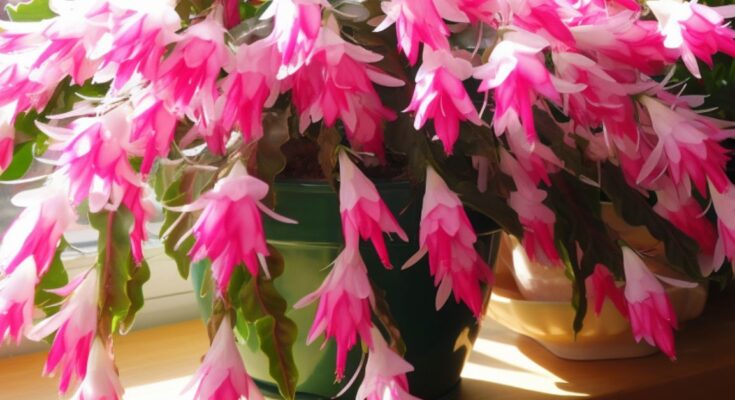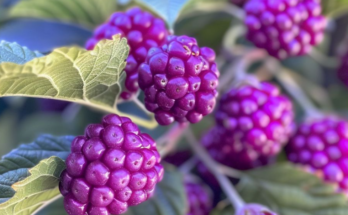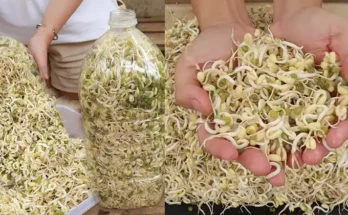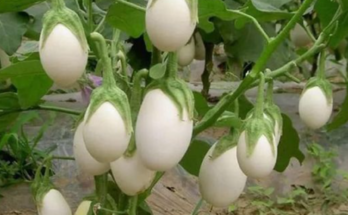As the holiday season approaches, our homes come alive with festive decorations, twinkling lights, and the heartwarming aroma of traditional treats. Amidst this joyful ambiance, the Christmas cactus stands as a living testament to the spirit of the season. With its vibrant, velvety blooms in shades of red, pink, white, and even purple, this tropical wonder adds an enchanting touch to any indoor garden.
The Christmas cactus, belonging to the Schlumbergera genus, boasts a fascinating history and captivating beauty that have made it a beloved houseplant around the world. Beyond its striking appearance, the Christmas cactus has become a symbol of resilience, as it thrives and blooms during the colder months when most other plants rest.
In this comprehensive guide, we invite you to discover the secrets of cultivating a Christmas cactus that blooms endlessly, gracing your home with a spectacle of colors throughout the year. We will cover the basics of Christmas cactus care and also cover some lesser known tips.
Part I: Christmas Cactus Care Basics
Choose the Right Location
Proper placement is crucial for the health and blooming of your Christmas cactus. Place the plant near a window where it can receive bright, indirect light. Avoid direct sunlight as it may scorch the leaves. Additionally, ensure that it is shielded from cold drafts and extreme temperature fluctuations.
Provide Adequate Light
While Christmas cacti thrive in bright light, too much can be harmful. During the blooming period, expose your cactus to about 12-14 hours of bright light per day, but for the rest of the year, reduce it to about 8-10 hours. This light adjustment encourages blooming during the holiday season.
Maintain the Right Temperature
Christmas cacti prefer temperatures between 60°F to 70°F (15°C to 24°C). Fluctuations in temperature can cause bud drop and hinder blooming. Keep your plant away from heat sources such as radiators or vents, which can cause stress and blooming issues.
Water Wisely
Overwatering can lead to root rot, while underwatering may cause bud drop. Find the right balance by allowing the top inch of the soil to dry out before watering again. During the blooming period, keep the soil slightly moist but not waterlogged. Reduce watering after the flowering period.
Humidity is Key
Christmas cacti thrive in moderate to high humidity levels. To increase humidity around your plant, place a tray with water and pebbles nearby or use a humidifier. This helps prevent bud drop and encourages healthy blooms.
Feed with Fertilizer
Fertilize your Christmas cactus every two weeks during the growing season (spring and summer) with a balanced, water-soluble fertilizer. This ensures your plant receives the necessary nutrients for continuous blooming. However, avoid fertilizing during the blooming period.
Prune and Shape
Pruning your Christmas cactus after the blooming period can promote branching and create a bushier, healthier plant. Pinch or snip off a few segments from the tips of the stems to encourage new growth. This practice will also lead to more flowering sites.
Monitor Daylight Exposure
For the Christmas cactus to form buds, it needs extended periods of uninterrupted darkness, known as the photoperiod. In the fall, expose your cactus to 12-14 hours of darkness every night for about 6-8 weeks to encourage blooming during the holiday season.
Propagate with Care
If you want more Christmas cacti to increase your chances of blooms, propagate them during spring or early summer. Use healthy stem cuttings and allow them to callus for a few hours before planting them in well-draining soil. Water sparingly until roots develop.
Watch for Pests and Diseases
Monitor your Christmas cactus for common pests like spider mites and mealybugs. In case of infestation, treat the plant with insecticidal soap or neem oil. Moreover, ensure proper air circulation and avoid overcrowding, as it can make your plant susceptible to fungal diseases.
Part 2: Lesser Known Care Tips
While many people are familiar with the basics of Christmas cactus care, there are a few lesser-known tips that can make a significant difference in the plant’s health and blooming performance. These relatively unknown Christmas cactus care tips can help you take your plant’s care to the next level and ensure it thrives and blooms abundantly:
While many people are familiar with the basics of Christmas cactus care, there are a few lesser-known tips that can make a significant difference in the plant’s health and blooming performance. These relatively unknown Christmas cactus care tips can help you take your plant’s care to the next level and ensure it thrives and blooms abundantly:
Use Rainwater or Distilled Water:
Tap water often contains minerals and chemicals that can accumulate in the soil over time, potentially leading to salt build-up. To avoid this, consider watering your Christmas cactus with rainwater or distilled water. These purer water sources reduce the risk of mineral deposits and ensure your plant receives clean, pH-balanced hydration.
Importance: Using rainwater or distilled water prevents the accumulation of harmful minerals in the soil, which can cause nutrient imbalances and affect the plant’s overall health and blooming potential.
Repot with Fresh Soil Every Few Years:
Over time, the potting mix for Christmas cactus can break down and become compacted, hindering drainage and nutrient absorption. To maintain a healthy root system, repot your Christmas cactus every 2-3 years with fresh, well-draining cactus or orchid potting mix.
Importance: Repotting with fresh soil allows for improved root health, better nutrient availability, and enhanced drainage, creating a thriving environment for your Christmas cactus to produce more blooms.
Provide a Dormancy Period:
Christmas cacti, like many plants, benefit from a short period of dormancy or rest after the blooming season. During this time, reduce watering and place the plant in a slightly cooler location (around 50°F to 55°F or 10°C to 13°C) for about 4-6 weeks.
Importance: The dormancy period mimics the plant’s natural environment, allowing it to recover, build energy reserves, and set buds for the next blooming cycle. This practice ensures a healthier and more robust display of blooms during the next holiday season.
Promote Pollination:
To encourage natural pollination and ensure better fruit set, you can hand-pollinate your Christmas cactus. Use a small, soft brush to gently transfer pollen from one flower to another, mimicking the role of insects.
Importance: Hand-pollination increases the chances of successful fruiting, leading to the development of seeds. The plant invests energy into seed production, which, in turn, signals it to produce even more flowers in the future, resulting in endless blooms.
Avoid Over-fertilizing:
While fertilizing is essential for Christmas cactus growth, it’s crucial not to overdo it. Excessive fertilization can cause salt build-up in the soil and lead to nutrient imbalances, negatively impacting the plant’s overall health.
Importance: Proper fertilization maintains optimal nutrient levels without causing toxicity issues. Use a balanced, diluted fertilizer during the growing season, and refrain from fertilizing during the blooming period to encourage abundant blooms.



